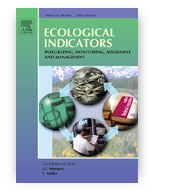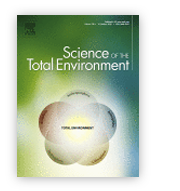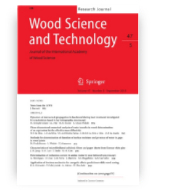
Research papers of the month – June 2024
We present the highest-score research papers of June 2024. These papers have ben published in journals with the highest Ministerial score – 200 points.
Graph Enhanced Co-Occurrence: Deep dive into urban park soundscape
Grzegorz Chrobak; Rengin Aslanoglu; Aleksandra Lubańska; Tomasz Kowalczyk; Katarzyna Tokarczyk-Dorociak; Szymon Szewrański; Jan Kazak
Ecological Indicators
Ministerial score = 200.0
Journal Impact Factor (2023) = 6.9 (Q1)
 Based on the detailed exploration of urban park soundscapes through graph theory, this study presents a nuanced examination of the acoustic environments of two urban parks located in Wrocław, Poland, and Ankara, Turkey. The research captures the diversity of sound events within these parks, emphasizing the co-occurrence and interconnectivity of natural and anthropogenic sounds. By mapping these sounds into a network, the research provides a novel perspective on urban soundscapes, emphasizing the usefulness of some of indicators stemming from graph science in the realms of urban park acoustics. The findings suggest that a holistic approach to urban park design, considering the various measures of acoustic ecosystem organization, can contribute significantly to urban planning and environmental conservation. Through detailed analysis, the study reveals the potential of graph-theoretical approaches in understanding and improving the auditory experiences in urban green spaces, highlighting the synergy between different sound sources and their collective impact on the urban park ecosystem.
Based on the detailed exploration of urban park soundscapes through graph theory, this study presents a nuanced examination of the acoustic environments of two urban parks located in Wrocław, Poland, and Ankara, Turkey. The research captures the diversity of sound events within these parks, emphasizing the co-occurrence and interconnectivity of natural and anthropogenic sounds. By mapping these sounds into a network, the research provides a novel perspective on urban soundscapes, emphasizing the usefulness of some of indicators stemming from graph science in the realms of urban park acoustics. The findings suggest that a holistic approach to urban park design, considering the various measures of acoustic ecosystem organization, can contribute significantly to urban planning and environmental conservation. Through detailed analysis, the study reveals the potential of graph-theoretical approaches in understanding and improving the auditory experiences in urban green spaces, highlighting the synergy between different sound sources and their collective impact on the urban park ecosystem.
DOI:10.1016/j.ecolind.2024.112172
FdeC expression regulates motility and adhesion of the avian pathogenic Escherichia coli strain IMT5155
Adrianna Aleksandrowicz; Kjærup Rikke Brødsgaard; Krzysztof Grzymajło; Fernando Garcia Martinez; Javier Muñoz; Dominika Borowska; Samantha Sives; Lonneke Vervelde; Tina Sørensen Dalgaard ; Robert A. Kingsley; Rafał Kolenda
Veterinary Research
Ministerial score = 200.0
Journal Impact Factor (2023) = 4.4 (Q1)
 Adaptation of avian pathogenic E. coli (APEC) to changing host environments including virulence factors expression is vital for disease progression. FdeC is an autotransporter adhesin that plays a role in uropathogenic Escherichia coli (UPEC) adhesion to epithelial cells. Expression of fdeC is known to be regulated by environmental conditions in UPEC and Shiga toxin-producing E. coli (STEC). The observation in a previous study that an APEC strain IMT5155 in which the fdeC gene was disrupted by a transposon insertion resulted in elevated adhesion to chicken intestinal cells prompted us to further explore the role of fdeC in infection. We found that the fdeC gene prevalence and FdeC variant prevalence differed between APEC and nonpathogenic E. coli genomes. Expression of the fdeC gene was induced at host body temperature, an infection relevant condition. Disruption of fdeC resulted in greater adhesion to CHIC-8E11 cells and increased motility at 42 °C compared to wild type (WT) and higher expression of multiple transporter proteins that increased inorganic ion export. Increased motility may be related to increased inorganic ion export since this resulted in downregulation of YbjN, a protein known to supress motility. Inactivation of fdeC in APEC strain IMT5155 resulted in a weaker immune response in chickens compared to WT in experimental infections. Our findings suggest that FdeC is upregulated in the host and contributes to interactions with the host by down-modulating motility during colonization. A thorough understanding of the regulation and function of FdeC could provide novel insights into E. coli pathogenesis.
Adaptation of avian pathogenic E. coli (APEC) to changing host environments including virulence factors expression is vital for disease progression. FdeC is an autotransporter adhesin that plays a role in uropathogenic Escherichia coli (UPEC) adhesion to epithelial cells. Expression of fdeC is known to be regulated by environmental conditions in UPEC and Shiga toxin-producing E. coli (STEC). The observation in a previous study that an APEC strain IMT5155 in which the fdeC gene was disrupted by a transposon insertion resulted in elevated adhesion to chicken intestinal cells prompted us to further explore the role of fdeC in infection. We found that the fdeC gene prevalence and FdeC variant prevalence differed between APEC and nonpathogenic E. coli genomes. Expression of the fdeC gene was induced at host body temperature, an infection relevant condition. Disruption of fdeC resulted in greater adhesion to CHIC-8E11 cells and increased motility at 42 °C compared to wild type (WT) and higher expression of multiple transporter proteins that increased inorganic ion export. Increased motility may be related to increased inorganic ion export since this resulted in downregulation of YbjN, a protein known to supress motility. Inactivation of fdeC in APEC strain IMT5155 resulted in a weaker immune response in chickens compared to WT in experimental infections. Our findings suggest that FdeC is upregulated in the host and contributes to interactions with the host by down-modulating motility during colonization. A thorough understanding of the regulation and function of FdeC could provide novel insights into E. coli pathogenesis.
DOI:10.1186/s13567-024-01327-5
Effect of different sizes of nanocopper particles on rainbow trout (Oncorhynchus mykiss W.) spermatozoa motility kinematics
Małgorzata Garncarek-Musiał; Katarzyna Dziewulska; Monika Kowalska-Góralska
Science of the Total Environment
Ministerial score = 200.0
Journal Impact Factor (2023) = 9.8 (Q1)
 In recent years, nanocopper (Cu NPs) has gained attention due to its antimicrobial properties and potential for industrial, agricultural, and consumer applications. But it also has several effects on the aquatic environment. Widespread use of various nanoproducts has raised concerns about impacts of different nanoparticle size on environment and biological objects. Spermatozoa is a model for studying the ecotoxic effects of pollutants on cells and organisms. This study aimed to investigate the effects of different sizes of copper nanoparticles on rainbow trout spermatozoa motility, and to compare their effects with copper ionic solution. Computer assisted sperm analysis (CASA) was used to detect movement parameters at activation of gametes (direct effect) with milieu containing nanocopper of primary particle size of 40–60, 60–80 and 100 nm. The effect of the elements ions was also tested using copper sulfate solution. All products was prepared in concentration of 0, 1, 5, 50, 125, 250, 350, 500, 750, and 1000 mg Cu L−1. Six motility parameters were selected for analysis. The harmful effect of Cu NPS nanoparticle was lower than ionic form of copper but the effect depends on the motility parameters. Ionic form caused complete immobilization (MOT = 0 %, IC100) at 350 mg Cu L−1 whilst Cu NPs solution only decreased the percentage of motile sperm (MOT) up to 76.4 % at highest concentration tested of 1000 mg Cu L−1 of 40–60 nm NPs. Cu NPs of smaller particles size had more deleterious effect than the bigger one particularly in percentage of MOT and for curvilinear velocity (VCL). Moreover, nanoparticles decrease motility duration (MD). This may influence fertility because the first two parameters positively correlate with fertilization rate. However, the ionic form of copper has deleterious effect on the percentage of MOT and linearity (LIN), but in some concentrations it slightly increases VCL and MD.
In recent years, nanocopper (Cu NPs) has gained attention due to its antimicrobial properties and potential for industrial, agricultural, and consumer applications. But it also has several effects on the aquatic environment. Widespread use of various nanoproducts has raised concerns about impacts of different nanoparticle size on environment and biological objects. Spermatozoa is a model for studying the ecotoxic effects of pollutants on cells and organisms. This study aimed to investigate the effects of different sizes of copper nanoparticles on rainbow trout spermatozoa motility, and to compare their effects with copper ionic solution. Computer assisted sperm analysis (CASA) was used to detect movement parameters at activation of gametes (direct effect) with milieu containing nanocopper of primary particle size of 40–60, 60–80 and 100 nm. The effect of the elements ions was also tested using copper sulfate solution. All products was prepared in concentration of 0, 1, 5, 50, 125, 250, 350, 500, 750, and 1000 mg Cu L−1. Six motility parameters were selected for analysis. The harmful effect of Cu NPS nanoparticle was lower than ionic form of copper but the effect depends on the motility parameters. Ionic form caused complete immobilization (MOT = 0 %, IC100) at 350 mg Cu L−1 whilst Cu NPs solution only decreased the percentage of motile sperm (MOT) up to 76.4 % at highest concentration tested of 1000 mg Cu L−1 of 40–60 nm NPs. Cu NPs of smaller particles size had more deleterious effect than the bigger one particularly in percentage of MOT and for curvilinear velocity (VCL). Moreover, nanoparticles decrease motility duration (MD). This may influence fertility because the first two parameters positively correlate with fertilization rate. However, the ionic form of copper has deleterious effect on the percentage of MOT and linearity (LIN), but in some concentrations it slightly increases VCL and MD.
DOI:10.1016/j.scitotenv.2024.173763
The significance of structural components of lignocellulosic biomass on volatile organic compounds presence on biochar - a review
Ewa Syguła; Daniel Ciolkosz; Andrzej Białowiec
Wood Science and Technology
Ministerial score = 200.0
Journal Impact Factor (2023) = 3.4 (Q1)
 The product of thermochemical processing of lignocellulosic biomass is biochar. It has a range of properties that make it suitable for a variety of economic applications. However, during pyrolysis and torrefaction, volatile organic compounds (VOCs) are released and may redeposit on the surface of the biochar. Some of these compounds may be harmful to the environment and humans. Bibliometric study shows that, to date, studies on the release of VOCs from biochar have been of an inventory nature and concerned with specific case studies of the specific types of biomass. To date, there has been no comprehensive and systematic analysis of the influence of lignocellulosic biomass properties and pyrolysis/torrefaction process parameters on VOC formation and redeposition on biochar. In this paper, the analysis is presented of the potential harmfulness of VOCs released during the thermochemical processing of lignocellulosic biomass components, based on cellulose, hemicellulose, and lignin pyrolysis/torrefaction chemistry data. 10 volatile organic compounds from cellulose, hemicellulose, and lignin pyrolysis were identified as potentially harmful due to the following properties: carcinogenicity, toxicity, flammability, skin corrosion/irritation, eye irritation, and mutagenicity, with different degrees of harmfulness. Additionally, the VOCs identified on biochar samples show a potential hazard. Among 140 identified compounds, 33 of them had harmful properties. Therefore, the redeposition on biochar of ketones, aldehydes, cyclic and aromatic hydrocarbons including polyaromatic hydrocarbons, and their derivatives, esters, and furans may lead to environmental contamination due to their release from biochar. A new niche for systematic research on the development of new knowledge regarding the biochars produced from biomass as a source of pollutant emission has been identified.
The product of thermochemical processing of lignocellulosic biomass is biochar. It has a range of properties that make it suitable for a variety of economic applications. However, during pyrolysis and torrefaction, volatile organic compounds (VOCs) are released and may redeposit on the surface of the biochar. Some of these compounds may be harmful to the environment and humans. Bibliometric study shows that, to date, studies on the release of VOCs from biochar have been of an inventory nature and concerned with specific case studies of the specific types of biomass. To date, there has been no comprehensive and systematic analysis of the influence of lignocellulosic biomass properties and pyrolysis/torrefaction process parameters on VOC formation and redeposition on biochar. In this paper, the analysis is presented of the potential harmfulness of VOCs released during the thermochemical processing of lignocellulosic biomass components, based on cellulose, hemicellulose, and lignin pyrolysis/torrefaction chemistry data. 10 volatile organic compounds from cellulose, hemicellulose, and lignin pyrolysis were identified as potentially harmful due to the following properties: carcinogenicity, toxicity, flammability, skin corrosion/irritation, eye irritation, and mutagenicity, with different degrees of harmfulness. Additionally, the VOCs identified on biochar samples show a potential hazard. Among 140 identified compounds, 33 of them had harmful properties. Therefore, the redeposition on biochar of ketones, aldehydes, cyclic and aromatic hydrocarbons including polyaromatic hydrocarbons, and their derivatives, esters, and furans may lead to environmental contamination due to their release from biochar. A new niche for systematic research on the development of new knowledge regarding the biochars produced from biomass as a source of pollutant emission has been identified.
DOI:10.1007/s00226-024-01557-y
Integrated plankton and trace metal analysis as indicators of organic pollution threats from carp-cultured ponds to adjacent ecosystems: Implications for sustainability
Manasi Mukherjee; Paweł Jarzembowski; Ryszard Polechoński; Jarosław Proćków
Ecological Indicators
Ministerial score = 200.0
Journal Impact Factor (2023) = 7.0 (Q1)
 Stawy Milickie (Milicz Ponds) is a natural reserve that has a great ecological importance as a Ramsar site and economic importance as one of the largest carp breeding centres in Europe. Continuous anthropogenic pressure on these large ecosystems can lead to a high disturbance on its natural ecology and sustainability. Phytoplankton, one of the most important indicators of any anthropogenic load, especially organic pollution have been studied in the present study. This is the first work ever from Milicz ponds, wherein the diversity, community structure and seasonal variability of phytoplankton with respect to changes in physicochemical parameters and trace metals have been studied. Periodic samples of water and phytoplankton were collected from four selected ponds of various sizes from October 2018 to September 2019. Of the four selected ponds one was unused for carp cultivation. The study reports the presence of 147 phytoplankton species in nine distinct taxonomic groups. The Genera based Algal pollution index indicated presence of organic pollution in both noncultured pond and carp-cultured pond. The heavy metals detected in the concentration order of Cd>Mn>Fe>Zn>Cu>Pb remained much higher than the safe limits of freshwater aquaculture ponds. The probable sources of these pollutants were identified as artificial feed used in the cultivation of carp and inundation from the river basin. This study emphasizes the urgent need for continuous qualitative and quantitative assessment and monitoring of water parameters, including plankton, in these ponds. This study highlights how the structure of microplankton communities, in conjunction with heavy metal analysis, serves as indicators of the spread of organic pollution in non-cultivated aquaculture environments. It strongly advocates for implementing sustainable measures to safeguard this vital ecosystem.
Stawy Milickie (Milicz Ponds) is a natural reserve that has a great ecological importance as a Ramsar site and economic importance as one of the largest carp breeding centres in Europe. Continuous anthropogenic pressure on these large ecosystems can lead to a high disturbance on its natural ecology and sustainability. Phytoplankton, one of the most important indicators of any anthropogenic load, especially organic pollution have been studied in the present study. This is the first work ever from Milicz ponds, wherein the diversity, community structure and seasonal variability of phytoplankton with respect to changes in physicochemical parameters and trace metals have been studied. Periodic samples of water and phytoplankton were collected from four selected ponds of various sizes from October 2018 to September 2019. Of the four selected ponds one was unused for carp cultivation. The study reports the presence of 147 phytoplankton species in nine distinct taxonomic groups. The Genera based Algal pollution index indicated presence of organic pollution in both noncultured pond and carp-cultured pond. The heavy metals detected in the concentration order of Cd>Mn>Fe>Zn>Cu>Pb remained much higher than the safe limits of freshwater aquaculture ponds. The probable sources of these pollutants were identified as artificial feed used in the cultivation of carp and inundation from the river basin. This study emphasizes the urgent need for continuous qualitative and quantitative assessment and monitoring of water parameters, including plankton, in these ponds. This study highlights how the structure of microplankton communities, in conjunction with heavy metal analysis, serves as indicators of the spread of organic pollution in non-cultivated aquaculture environments. It strongly advocates for implementing sustainable measures to safeguard this vital ecosystem.
DOI:10.1016/j.ecolind.2024.112242










